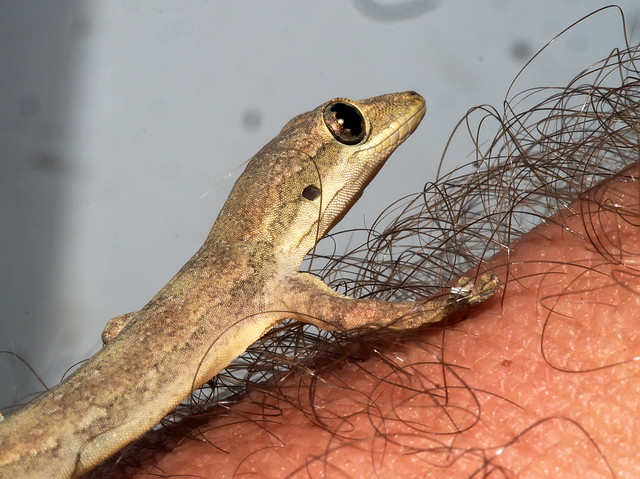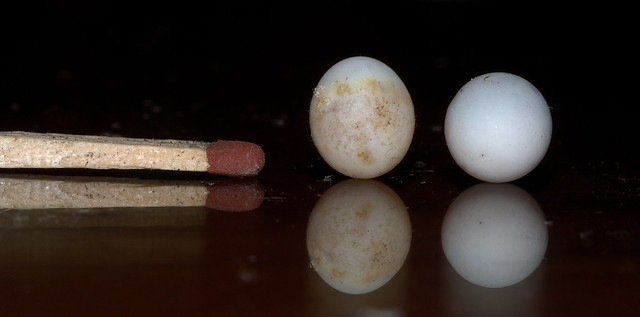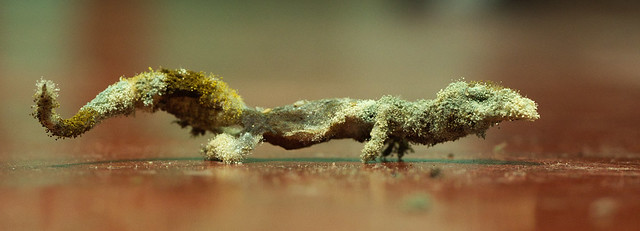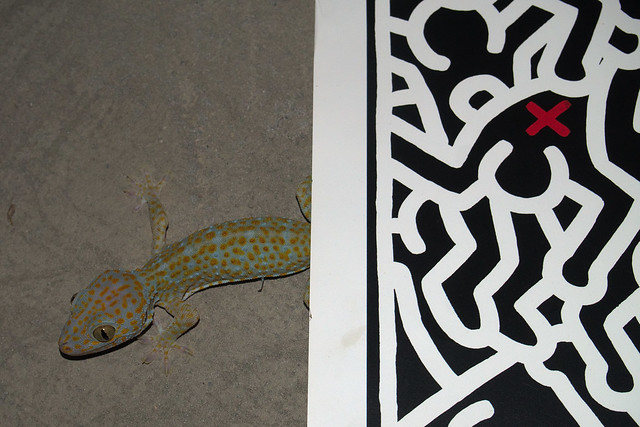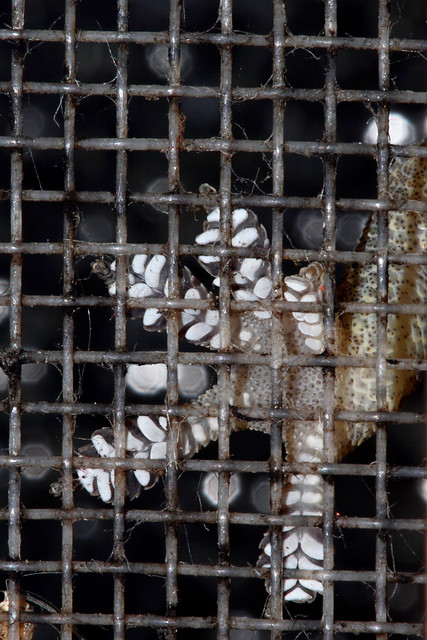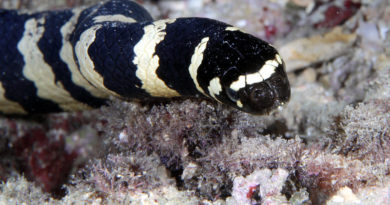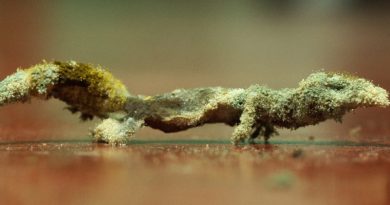Tropical Housemates
No Geckos in Austria
I grew up in a cold, cold place. Vienna, Austria is about half-way between the equator and the North pole, which makes it a cold city about half of the year. It’s one of my most vivid childhood memories to see my dad, coming back into our house from a walk through the winterly vineyards in Vienna’s south, with a big smile and several small icicles hanging from his mustache. If ice grows on your face when you go outside, it’s cold. Of course it’s a trivial insight that central Europe is colder than the tropical Philippines, but the European winter weather has wide-ranging consequences for the way humans interact with the rest of the animal kingdom.
During the height of the Austrian winter, you won’t see much animal life outside. Some birds have migrated to warmer, sunnier parts of the world, others barely scrape by in the snow-covered landscape. Avian-affine humans put up bird feeders on their balconies, mini-huts with seeds for the energy-starved birds to feed on. That’s where you can occasionally spot sparrow or a tit (the bird, in case anyone has an overly erotizised mind).
And there are almost no insects around. Some of them survive as larvae, dug deep in the soil, while others wait for spring in a dormant state, hidden under a leaf or in the crack of a tree bark. Snakes and Lizards? You won’t see any of these either around Vienna from about October to April. There are no bugs for them to eat, and for “cold blooded” animals which operate their bodies at ambient temperature, winter temperatures limit their activity by the ways of the unforgiving laws of thermodynamics.
Now, once spring approaches the weather in Vienna warms up again, and more wildlife frolics in the forests and gardens. But even then the Euro human and his pets are alone in their house. There are no unwanted visitors, the fauna and the living room are well separated. One reason for this separation is that during the just recently passed winter time human dwellings needed to be insulated from the cold. In central Europe, you have to burn wood, oil or gas during the winter, and pad your house’s wall with layers of insulation to retain the heat in your house. Windows usually feature at least two layers and seal into their frames with gaskets; All these barriers don’t just keep the warmth from escaping, but also the wildlife from coming in.
On top of that, the Germanic and Slavic peoples who inhabit central Europe are very orderly people, sometimes to the point of obsessiveness (“Freud discovered neurosis in Vienna, which was not very hard” goes the saying.). Any insect or reptile crawling into a home would immediately cause a hectic reaction, and the animal would either be evicted or killed. Houses in this part of the world are strictly for humans and the pets they keep, any wildlife, no matter how small and harmless, must stay outside.
Gecko Watching Beats TV
This nature-separated living situation changed drastically for me when I moved to Okinawa, in sub-tropical Japan, and later to Dumaguete in the Philippines. No harsh winter keeps mammals and birds subdued and the cold-blooded animals in a near-frozen state; no heat isolation of homes separates man from beast. Life in the tropics happens so much more outside, and there are so many more animals to observe in and around homes. I loved that situation from the first week of my time in the tropics and sub-tropics. The tropical housemates I enjoy most are the geckos. After too lengthy work-days in the lab, I would often lay on my back on the wooden patio of my house in Japan, to observe these agile reptiles. Watching their hunt for mosquitoes attracted by my porch-light and fight for every valuable square centimeter of mosquito-territory on my ceiling was like a life-stream of a nature documentary. The mosquito captures were fun to watch, but I got really excited every time a gecko caught a somewhat larger insect and struggled to swallow its prey. The fight of the insect to get away from the miniature predator’s teeth and the hungry gecko’s desperate attempts to keep it in its jaws were an epic drama which entertained me on many hot and humid Okinawa evenings.
The Visayan name for these small geckos is botiki (the scientific name of the animal is Hemidactylus frenatus), and these reptiles are as abundant in the Philippines as in Okinawa. Occasionally I find the shells of tiny eggs of these animals behind a stack of books which I hadn’t moved in a while. It’s mind-boggling how a complete vertebrate animal can develop in these fragile, minute spheres. An animal with a heart, lungs, a liver, kidneys and a stomach not exactly like ours, but very similar to our organs has hatched from these eggs smaller than the tip of my pinky finger, just barely bigger than the head of a match.
In a rare case of the adhesion pads on the feet of a gecko failing, this botiki landed on my forearm, coincidentally just as I got my camera ready. This and all photographs in the article by the hairy author.
Botiki eggs, just a bit bigger than a match’s head.
Dead botiki. How did I get this unusual shot a botiki mummified by a layer of fungi? Ironically, it fell into my camera box and couldn’t make it out again. The camera box acted as a trap, to get the camera a really unusual subject. On a high alpine pass on the border between Austria and Switzerland, a mummified bronze-age man was found in 1991, well-preserved and complete with bow and arrow, and bronze-age fur clothing for high-altitude exploration. The find was a true archaeological sensation which made headlines well beyond the community of historians. The bronze age man became a national celebrity thousands of years after his death. The valley below the pass is called the Ötztal, and hence the mummified bronze-age traveler became known as Ötzi. I like to think of this mummified botiki as my personal reptilian Ötzi.
In Dumaguete I share my house with a single large toko – that’s the name for a large gecko in Visayan (the scientific name of this lizard is Gekko gecko). While the scores of botiki around the house remain an anonymous crowd, I recognize the toko.
Since I moved into my current house, in early 2018, I have encountered the animal on a regular basis. It doesn’t make the typical territorial toko vocalizations, a sharp “toko!” sound – hence the name of the reptile – and therefore I assume that the lizard is a female.
Gecko Evolution
These geckos and we humans are evolutionary cousins, albeit very distant ones. Reptiles split into two lineages very briefly after amphibians gave rise to the first reptiles. The oldest known reptile is thought to have lived in the Carboniferous, 334 million years ago. And only a relatively brief time later, in evolutionary terms, 306 million years ago and still during the Carboniferous, an animal roamed ancient Earth which already clearly belonged to the Diapsid reptiles, the lineage later leading to mammals, including humans. We had then already split from the other reptilian lineage, the Sauropsids, which eventually gave rise to reptiles, like geckos, crocodiles and birds. Hence the botiki and the toko are vertebrates, but nevertheless very alien to us – our last common ancestor was alive more than 300 million years ago, long before the age of the dinosaurs had even commenced.
And that evolutionary distance also reflects an emotional distance. Whenever my house-toko shows up on a piece of open wall while I’m in the room, I never miss the chance to observe her. I try not to move, and she does not move. The gecko’s eyes face upward and she certainly sees that I am there, although my calm demeanor likely makes her see me as less of a threat. What does she think about me? Does she recognize me as that one particular weird large being sharing the house with her, or do all humans look alike to her reptilian eyes? Does she feel some sympathy for humans after sharing a house with some of us for most of her life, or is fear the only emotion we evoke in these reptiles? There is no body language and there are no vocalizations I can use to decipher her state of mind. When I observe a fellow mammal like a cat, I can gauge its emotional state by how it sounds and postures its body. A cat making a sharp, hissing sound while pulling its ears close to its head is fearful and tense. In contrast a cat which rolls over on its belly while purring is obviously a happy feline. I can’t ask a cat what she feels, but I can get a pretty good idea about her emotional state by observing the animal For a gecko there are no such signals, immediately and intuitively comprehensible to me to understand its emotional states. My toko is a very pretty reptile, with her striking orange spots and piercing eyes, but not a creature I as a human can emotionally relate to.
Our episodes of human – gecko stare-down usually last a minute or two, interspersed by her quick dashes to a new position along the wall. Moving around a corner, the toko often gets to rest halfway behind an 80s New York Street art poster on top of the refrigerator. With just her head and forelimbs sticking our from underneath the wall art, she eyes me for another minute before disappearing behind the kitchen cupboard or the sink. I value these brief, strange encounters. I get to interact with a fascinating wild animal which had decided to make my home her home.
Toko behind Keith Harring. Harring was one of the pioneers of the New York street art scene in the 80s, who bridged the barriers between low-brow, subway-wall-graffiti-type art and the type of art which hangs in museums or gets purchased by rich people for exorbitant amounts of money. Does my toko appreciate Harring’s art? I doubt it, but to me the contrast of the two patterns, one on the print, the other one of the gecko’s skin, looks quite appealing.
The Physics of Sticking to a Wall
During all that interaction she stuck to the vertical surface of my kitchen wall, walking as if she had conveniently disabled gravitation. The pads on the tips of the toes which allow geckos to walk along completely featureless, smooth walls are an amazing evolutionary innovation, and a number of clever studies have – almost – elucidated what exactly goes on when a gecko wall-walks.
The pads are covered covered with many rows of tiny lamellae, where each one is a rows of minute stalks called setae. The setae are made of a protein called keratin, very similar to the protein that’s making up our hair. A square millimeter of gecko foot-pad carries about 14400 such setae. Each of the setae has in turn somewhere between 100 and 1000 spatulae attached to its tip. These structures each resemble a pharmacist’s spatula, with a thin stalk and a triangular flattened pad on their tip. They are extremely tiny, only about 1/5000th of a millimeter in diameter. Next to a geck-toe-pad spatula a human hair with a diameter of 1/10th of a millimeter would appear like a giant redwood juxtaposed to a young birch tree. One seta carries between 100 and 1000 spatulae – hence as a rough estimate, that makes about 72 million spatulae on a 10 mm2 gecko foot1! This enormously expands the surface area of the gecko foot, and multiplies the surface adhesion forces which keep the botiki and toko attached to a wall. But which are these adhesion forces? This turned out to be a surprisingly hard question to answer, despite very intense research efforts by several groups of research biologists.
The main role in keeping the toko and botiki vertical is played by the Van der Waals force. This force is one of the weakest molecular forces, and we can’t directly observe it in our meso-world. The meso-world is the realm of human experience, encompassing spatial scales much larger than the minute distances between atoms but much smaller than the enormous distances between stars and galaxies. You’ll have to follow me down from this, our, world to the smaller atomic scale for an explanation of the Van der Waals force. It is based on the attractions between unevenly distributed charges within molecules. The molecules attracted to each other in the Van der Waals force do not carry an absolute excess of positive or negative electric charges, as in the case of the much stronger ionic or electrostatic forces. Instead, the molecules involved are neutral, but their charges are not evenly distributed between the atoms making up the molecule. An example is the water molecule, H2O, composed of an oxygen and two hydrogen atoms. The oxygen atomic nucleus has a much stronger urge to pull electrons toward it, and it pulls the shared electrons of the molecule away from the two hydrogens. Hence, the oxygen-side of the water molecule is more negatively charged (with more negatively charged electrons), and will attract the more positively charged hydrogen side of another water molecule. These so-called hydrogen bridges are one example of the Van der Waals force. Even though the van der Waals force is weak, it nevertheless is such an awesome force that Dutch Professor Johannes van der Waals received the 1910 Physics Nobel Prize for its discovery.
How do we know that the Van der Waals force plays a major role in gecko foot adhesion? Experiments involving pulling a gecko’s foot over plates with different surfaces have shown that the force exerted by the adhesion of the toe-pads to surfaces with different properties are relatively constant. This excludes a number of other forces which all depend on the kind of surface a gecko attaches to, and leaves the Van der Waals force as the most likely explanation.
A gecko’s foot from below, with the adhesive pads carrying the lamellae clearly visible. No, the lizard was not caged, it was resting on the other side of a mosquito barrier.
But, interestingly, capillary force also plays a role in the adhesion of gecko toes to walls. These are forces which are less exotic than Van der Waals’ forces, and can be observed in everyday life. If you carefully stick the corner of a paper tissue in a drop of coffee which you have spilled onto your breakfast table, the dark coffee fluid will soak the tissue paper beyond the tip which you actually immersed. A whole corner of the tissue will darken when capillary fluids drag the liquid along the fibers of the paper. These capillary forces are very different in strength when acting on water-repellent and water-absorbing surfaces, and this is indeed the case when measuring the attachment forces of single setae (yes, those hairlets with the 1/5000th millimeter diameter – imagine the difficulty of these experiments!). Also, the attachment forces change when the ambient air humidity changes.
But this explanation is not without doubters. Keratin changes its structure when coming in contact with water, and it could be this structural change, not the capillarity forces themselves, which explain the effect of humidity on the adhesion of gecko toe-pads.
Thirdly, electrostatic interactions play a role in the adhesive properties of gecko toe-pads. This force can also be observed in everyday, meso-world life: A plastic foil which has been charged by rubbing it on another foil will stick to small pieces of paper or chunks of the same plastic foil. The basis of this attraction is that positive charges attract negative ones. When the charge imbalance is only induced when a material, like the gecko setae, is bent upon contact with a surface it touches, that is called contact electrification. Since small amounts of electric charges can be measured when gecko adhesive structures touch down on a surface, contact electrification likely plays a role in gecko adhesion.
But this is still not the whole story. There seems to be an aspect of gecko-toe-adhesion which depends on a thin layer of fat molecules, called phospholipids. To quote Ping Yuan Hsu who together with his colleagues discovered the role of phospholipids, “geckos leave footprints” but “geckos do not use glue for adhesion”. The fat molecules seem to protect the keratin molecules of the setae rather than act as a chemical glue increasing adhesion strength.
And, interestingly, all of the forces involved in the adhesion of a gecko’s toe pads to a surface are so well balanced that the adhesion pads are self cleaning. Dirt sticks to the substrate just a bit stronger than to the gecko feet. Most types of debris stuck on the lamelllae are automatically removed from the pads after a few steps by the gecko.
Dozens of publications – each the result of thousands of scientific of man-hours – published in high-profile scientific journals later, we are still can’t be certain what keeps the toko and the botiki vertical. Some of the experiments were conducted with whole geckos, while others used isolated setae, observed by powerful microscopes. The interpretation of these experiments is not trivial, and the conclusions to draw from them are not obvious. But this persistent uncertainty about the correct explanation of gecko adhesion is not a weakness of science. In fact it is a strength, since the search for the truth continues and new experiments and observations will make us rethink what we think we know. Feedback from reality should trump even the most strongly held convictions! I am personally leaning towards believing in a mix of forces being involved in geck-to-wall adhesion, with the Van der Waals force being the most prominent one, but I’d be happy to be corrected if a new study comes out with some decisive results – or even if an expert on the topic convinces me of a different interpretation of the data.
Think of the Van der Walls, capillary and electrostatic forces, and about the phospholipids the next time you see a botiki run up a wall. If you know how to look there is amazing natural history happening all round you in the tropics.
Dr. Klaus M. Stiefel is a biologist, nature photographer and author based in Dumaguete, Negros Island, Philippines. Follow him at @Pacificklaus on Twitter at at @SexDugsScubaDiving on Facebook.
Check out all of my gecko photographs on Flickr. Click on the edges of the photos to scroll through the album:
Publications featuring research mentioned in the article:
Autumn, K., Sitti, M., Liang, Y. A., Peattie, A. M., Hansen, W. R., Sponberg, S. & Full, R. J. (2002). Evidence for van der Waals adhesion in gecko setae. Proceedings of the National Academy of Sciences, 99(19), 12252-12256.
Huber, G., Mantz, H., Spolenak, R., Mecke, K., Jacobs, K., Gorb, S. N., & Arzt, E. (2005). Evidence for capillarity contributions to gecko adhesion from single spatula nanomechanical measurements. Proceedings of the National Academy of Sciences, 102(45), 16293-16296.
Hansen, W. R., & Autumn, K. (2005). Evidence for self-cleaning in gecko setae. Proceedings of the National Academy of Sciences, 102(2), 385-389.
Hsu, P. Y., Ge, L., Li, X., Stark, A. Y., Wesdemiotis, C., Niewiarowski, P. H., & Dhinojwala, A. (2011). Direct evidence of phospholipids in gecko footprints and spatula–substrate contact interface detected using surface-sensitive spectroscopy. Journal of the Royal Society Interface, 9(69), 657-664.
Izadi, H., Stewart, K. M., & Penlidis, A. (2014). Role of contact electrification and electrostatic interactions in gecko adhesion. Journal of the Royal Society Interface, 11(98), 20140371.
Stark, A. Y., Klittich, M. R., Sitti, M., Niewiarowski, P. H., & Dhinojwala, A. (2016). The effect of temperature and humidity on adhesion of a gecko-inspired adhesive: implications for the natural system. Scientific reports, 6, 30936.
Niewiarowski, P. H., Stark, A. Y., & Dhinojwala, A. (2016). Sticking to the story: outstanding challenges in gecko-inspired adhesives. Journal of Experimental Biology, 219(7), 912-919.
1 14400 setae x 500 spatulae x 10 mm2
